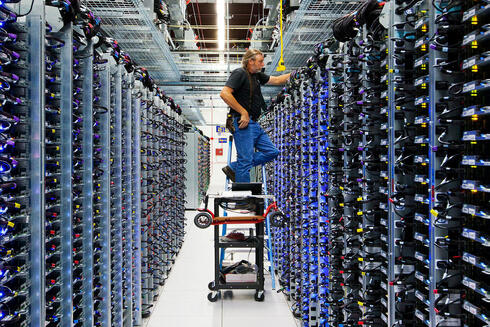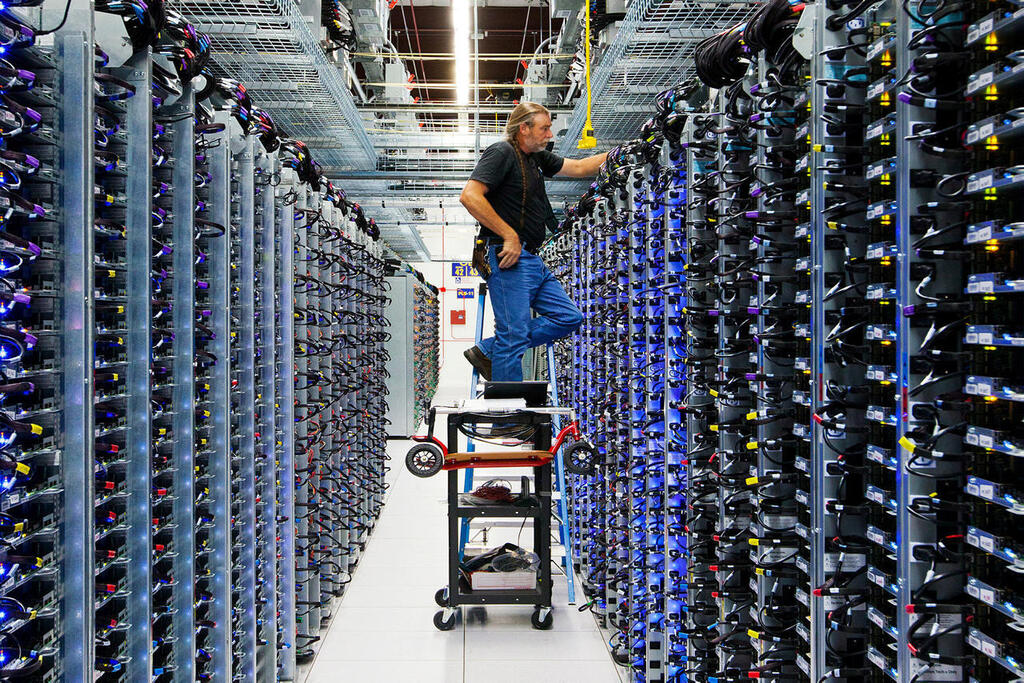
The environmental pollution behind the boom in artificial intelligence
Huge server farms that power AI have a climate impact that could increase to 14% of global carbon emissions
Generative AI has not only become the talk of the day, drawing attention previously reserved for crypto, but is also attracting major investments. However, under the radar of the regulators, this new tech race has a heavy hidden price, which may harm international attempts to curb the climate crisis, at this most critical juncture.
According to a recent report by PitchBook, VC fund investments have moved from crypto to the new golden goose - generative AI. Whereas, in 2018 $408 million was invested in generative AI companies over 41 transactions, in 2022 the number has jumped to $4.5 billion over 110 transactions. All while investment in crypto crashed by 70% from its peak in the first quarter of 2022 to the last quarter.
In many ways the two industries are extremely different, but in one specific area they are very similar - their operation and success require enormous computational power, which is accompanied by extraordinary environmental damage that includes mining of rare minerals, enormous carbon emissions, water and noise pollution. According to PitchBook’s report, by 2025, 3.2% of all carbon emissions in the world will come from server farms. Their environmental cost is only growing as the industry scales in a way that prioritizes expansion rather than efficiency.
According to estimates, by 2040 server farms may account for 14% of global carbon emissions, making it even more difficult to reduce emissions and combat the climate crisis. In Israel alone, according to estimates from the consulting firm BDO, the electricity consumption of the 10 planned server farms in Israel is equivalent to 250,000 households, or an addition of 170,000 cars to Israeli roads.
The need to increase the growth of huge server farms means that the industry will move to underpopulated areas where they can get low-cost electricity, multiple water sources, cheap land and relaxed local planning regulations. Establishing a server farm in Israel may be of great environmental significance, but it is economically attractive especially for larger corporations due to relatively low electricity prices - roughly half that of most European countries, especially since the Russian invasion of Ukraine and the increase in energy prices.
Like with crypto, the generative AI industry is engaging in an effort to try to replace existing systems regardless of the environmental cost. The crypto market, which mainly serves as an alternative trading arena, is already incurring a massive energy cost, all this before it even came close to achieving its goal of replacing traditional financial markets. According to the Cambridge Bitcoin Electricity Consumption Index (CBECI), Bitcoin alone consumes 0.5% of all electricity in the world, and if it were a country it would be in 32nd place in terms of electricity consumption. The New York Times reported that the excess use of electricity to mine Bitcoin was the carbon equivalent of 3.5 million more cars on the road in the U.S. alone.
Similarly, the generative AI industry is already having a disproportionate impact on the climate, and this is only the beginning. According to the International Energy Agency, AI language models and data centers are responsible for 1% of all carbon emissions in the world. In January, ChatGPT - which today serves about 13 million daily users and allows Bing to handle about half a billion queries a day - consumed as much electricity as 175,000 people. An analysis done at the beginning of the year by the University of Berkeley estimates that the training of GPT3, on which the first version of the chat is based, led to the emission of 550 tons of carbon dioxide.
The technology at the base of the crypto market, the blockchain, requires a huge investment in server farms called "mining farms.” Companies operating in the field financed their activities over the years by selling coins they "minted,” but with the growing interest in the field, they began to pay their electricity bills by raising capital and debt from VC funds, and indirectly from Goldman Sachs, Fidelity and JP Morgan, which today offer crypto trading and management services.
The environmental cost of the crypto market is not only the huge electrical consumption, but also water and noise pollution. A report published last week by an environmental working group examined the type of pollution and the direct harm to communities that are forced to live next to mining farms. For example, the pipeline that feeds water to the Bitcoin mining company Greenidge in Dresden, New York, draws about half a million cubic meters of water a day from nearby Seneca Lake to create the steam needed to mine Bitcoin.
The water is returned at a temperature of 42 degrees Celsius, while the local fish can only tolerate a temperature of up to 22 degrees. "It's like a giant fish blender," the report states, adding that the unnaturally warm water spurs the growth of algae that is toxic to humans and pets. "You don't want to bathe, cook or flush the toilet with it," one resident was quoted as saying in the report.
Blockstream's mining center in Adel, Georgia produces noise that lasts 24 hours a day, seven days a week and is heard in nearby communities. "It sounds like a thousand jet engines taking off at once," one resident said, "you can hear it five miles from here. The vibrations of the machine create ripples in a nearby lake. It is literally mind-blowing."
Generative AI is not only a polluting industry, it is an industry whose growth is inherently polluted: for an increase in performance, an exponentially larger model is required, which is reflected in increasing the amount of training data, which increases the computational costs, and, therefore, carbon emissions. The axiom in the field is that the bigger the model the better and there are only a few models whose training cost decrease, as in the case of the last model trained by Facebook. A 2019 study conducted by the University of Massachusetts Amherst found that the carbon footprint of training one large language model produced 284,000 tons of carbon dioxide over their lifetime.
In some ways the real and potential pollution of AI is even more dangerous than the crypto industry. This is because AI, unlike crypto, has produced a product that has been quickly adopted on a large scale by the general public, and because the measurement of pollution in its field, also unlike crypto, is not part of the discourse and is actually actively being suppressed.
One of the companies that was a pioneer in reporting and measuring pollution in AI is the company that produced ChatGPT - OpenAI. In 2018, OpenAI published a report that has since been widely cited, which says that the surge in computing power for various AI training doubles every 3.4 months or by a factor of ten every year. Five years later, OpenAI released its latest, most powerful model, GTP 4, while deliberately hiding the computational power required to train and deploy it.
The world is in the midst of a race to reduce greenhouse gas emissions in a variety of industries, with the aim of curbing the worst effects of climate change. It is not for nothing that the UN called climate change "the defining issue of our time.” The current decade is critical in order to limit the increase in temperature. Greenhouse gas emissions must be reduced by approximately 50% in order to meet international climate commitments made in recent years.
Tech companies like to boast of their efforts to fight the climate crisis, but in practice many are increasing their emissions in the current race to perfect AI capabilities. Companies like Google, Microsoft and Amazon are setting goals to net zero their greenhouse gas emissions in the coming decades, and in 2019 employees participated in a global climate strike to raise awareness of the growing dangers of the climate crisis.
In light of the meteoric growth of the AI industry, calls to recognize and reduce the amount of pollution it causes are also multiplying. While many industries have been working in recent years to reduce their negative impact, among other things by switching to renewable energy, implementing energy efficiency measures and complying with various regulatory rules, industries such as crypto and AI fly under the radar.
Despite being reported upon for years, international governments have done little to act. "In recent years, various studies have been published regarding the energy consumption of AI technologies, cryptocurrency mining and server farms in the cloud service," explains Professor Vered Blass from the Department of Environmental Studies at Tel Aviv University.
"The use of AI comes with a considerable environmental price with the use of computing resources, including the use of many raw materials, energy and water consumption, and various emissions. All of this raises the important question of whether tech companies are considering their environmental impact. Large companies such as Microsoft and Google do make voluntary efforts to reduce some of their environmental impacts, but are usually not required to comply with environmental legislation regarding the indirect environmental impacts that the use of their software services causes.”
Professor Blass points out that, among other things, effective regulation can mean the development of more efficient code, the use of renewable energies, joint responsibility of software and hardware companies within the framework of an extended manufacturer's warranty, meeting ambitious reduction goals and energy efficiency.















